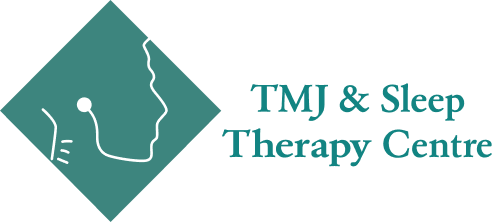Cranial Osteopathy: Helping Children Grow, Breathe and Feel Their Best
Could Gentle Cranial Osteopathy Help Your Child Thrive?
If your child struggles with uneven facial growth, sleep or feeding issues, anxiety or sensory challenges, or is recovering from a tongue tie release, cranial osteopathy offers more than just relief from jaw and head pain. It’s a gentle, hands‑on therapy that supports healthy craniofacial development, proper breathing and overall musculoskeletal and airway health.
Cranial osteopathy at TMJ & Sleep Therapy Centre of Northern Indiana is performed by Mark S. Cantieri, DO, FAAO, a board-certified specialist in neuromusculoskeletal medicine with more than four decades of hands-on osteopathic care. Dr. Cantieri co-authored the medical textbook Principles of Prolotherapy, is a past president of the American Academy of Osteopathy, and practices here at our Granger centre. His gentle, pediatric-friendly cranial work supports healthy growth and easier breathing. His therapy is often often suggested to support tongue-tie care and other therapies.
What Is Cranial Osteopathy?
Cranial osteopathy is a form of manual therapy focused on the bones, membranes and fluids of the head and spine. Practitioners use extremely gentle techniques to release tension, improve fluid flow and promote the body’s natural healing processes.
Cranial osteopathy works with the subtle movements between the skull’s bones to support overall balance and function.
Cranial Osteopathy can be very helpful for
- Facial development support and preparation for orthodontic treatment – guiding jaw and cranial growth to create space for proper tooth alignment and airway development.
- Recovery from tongue‑tie releases and torticollis (flat head syndrome) – reducing tension and supporting balanced musculature after surgical releases or early positional strain.
- Anxiety, sensory‑processing and behavioral challenges – calming the nervous system to improve emotional regulation and sensory integration.
- Birth‑related trauma, nursing and latch difficulties, digestive discomfort and sleep disturbances – promoting healthy neurological and musculoskeletal function in infants for better feeding, digestion and rest.
- Forward head posture and shoulder tension – relieving strain on the cervical spine and improving overall posture and breathing patterns.
How Does Cranial Osteopathy Work?
The bones of the skull are not rigidly fused; they have tiny, natural movements that allow for growth and healthy function. Tension from birth trauma, injury, chronic muscle strain or poor posture can restrict these movements and disrupt the craniosacral system.
Cranial osteopaths use their hands to feel for areas of restriction and gently release tension in soft tissues and joints. This encourages better circulation, nervous‑system function and supports balanced jaw and facial development.
A typical session involves:
- Initial evaluation: We review your child’s symptoms, health history and posture to determine how cranial osteopathy can help.
- Gentle hands‑on session: Your child lies comfortably while the practitioner lightly touches the head, neck, back and jaw. Most children describe the experience as soothing or meditative.
- Subtle adjustments: Techniques are tailored to your child’s natural rhythms, using soft rocking, compression or holding patterns.
- Post‑session effects: Many patients feel immediate relief or a sense of deep calm. Follow‑up sessions may be recommended for lasting results.

Signs Your Child May Benefit from Cranial Osteopathy
Your child may benefit significantly from myofunctional therapy if you notice any of the following signs:
- Regular mouth breathing or snoring
- Chronic nasal congestion, allergies, or frequent colds
- Difficulty concentrating, attention issues, or behavioral challenges
- Speech delays, articulation issues, or feeding difficulties
- Crowded teeth, misalignment, or orthodontic challenges
- Frequent ear infections or colds
Signs Your Child May Benefit from Cranial Osteopathy
Cranial osteopathy isn’t just for head and jaw pain; it can support a wide range of pediatric concerns. Your child may benefit if they experience:
- For children and teens: facial asymmetry or slow craniofacial growth; torticollis (“flat head” syndrome); persistent headaches, jaw clenching, grinding or TMJ clicking; difficulty adapting to orthodontic appliances; and anxiety, sensory‑processing or behavioral challenges.
- For infants: birth‑related trauma, nursing and latch difficulties, digestive discomfort or colic, and sleep disturbances.
- Preparation for or recovery from tongue‑ and lip‑tie releases – this gentle therapy can help infants and older children adapt more comfortably both before and after release procedures.
- Postural or airway issues: forward head posture, shoulder tension or other signs of airway obstruction, including chronic mouth breathing or recurrent sleep disturbances.
- Orthodontic and airway preparation: getting ready for airway orthopedic development & facial development, palatal expansion or other orthodontic treatments.
These broader applications show that cranial osteopathy is used to promote healthy growth, improve breathing and alleviate a range of musculoskeletal and airway concerns—not just jaw and head pain.
Benefits & What to Expect
Cranial osteopathy can provide more than symptom relief. Families report:
- Healthy craniofacial growth: By supporting balanced jaw and facial development, cranial osteopathy enhances results from palatal expansion and airway orthopedic development & facial development.
- Better breathing, digestion and sleep: Unwinding restrictions can improve circulation, nervous‑system and digestive function, helping your child breathe, feed and rest more easily.
- Reduced jaw, head and neck tension: Gentle manipulation reduces pressure on the TMJs and surrounding muscles.
- Calmer behavior and sensory integration: Supporting the craniosacral system can ease anxiety and sensory‑processing challenges, promoting emotional regulation.
- Complementary support: This therapy enhances outcomes when combined with myofunctional therapy, tongue‑tie care or pediatric sleep appliances.
Our sessions are child‑friendly and relaxing; parents often notice a calmer, more comfortable child afterward.
Why Choose TMJ & Sleep Therapy Centre for Cranial Osteopathy?
- Whole‑body, root‑cause philosophy: We integrate cranial osteopathy into a comprehensive approach that addresses airway function, musculoskeletal balance and overall developmental health.
- Experienced practitioners: Our cranial osteopathy is delivered by trained physicians who understand cranial anatomy and work closely with our ENT, orthodontic and myofunctional therapy specialists.
- Comprehensive diagnostics: We use three‑dimensional imaging, airway assessments and postural analysis to tailor therapy to your child’s specific needs.
- Child‑centered care: From playful interactions to gentle hands‑on sessions, we make sure your child feels safe, relaxed and engaged.
